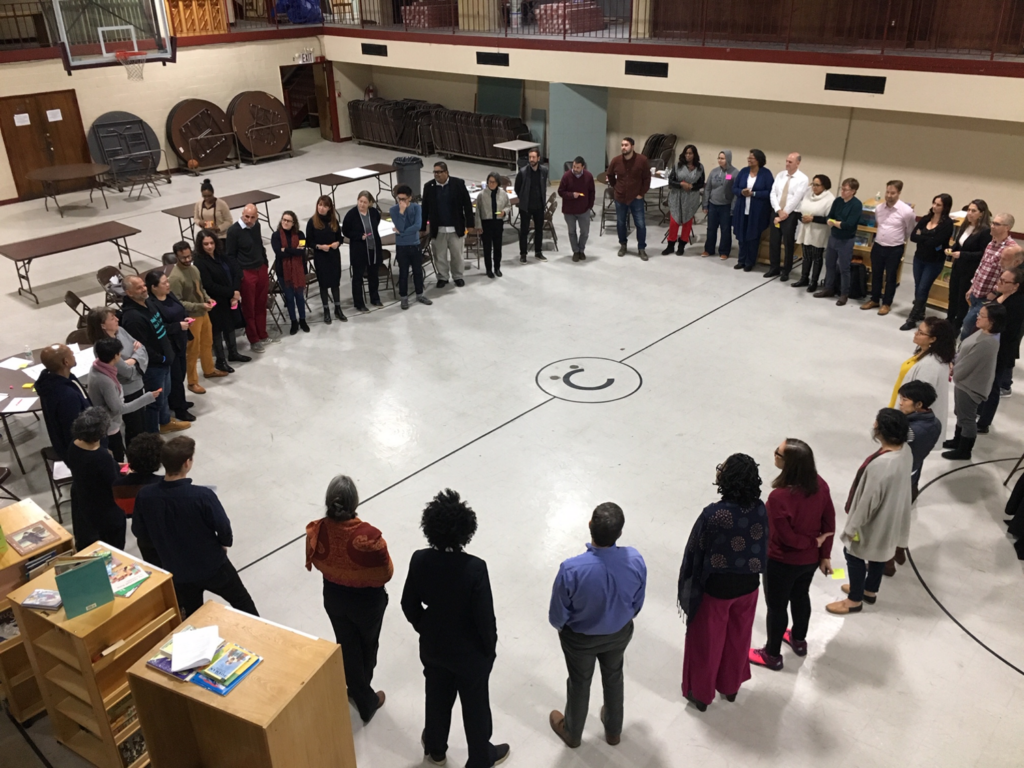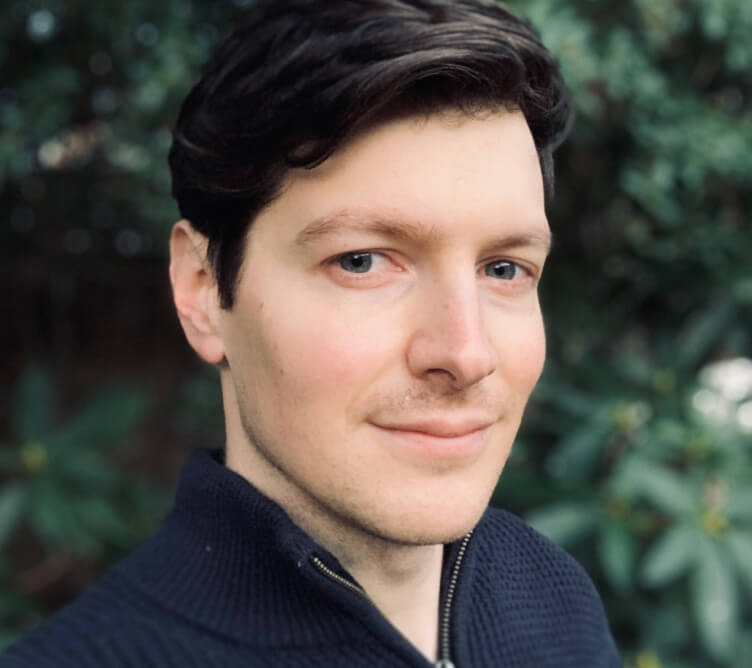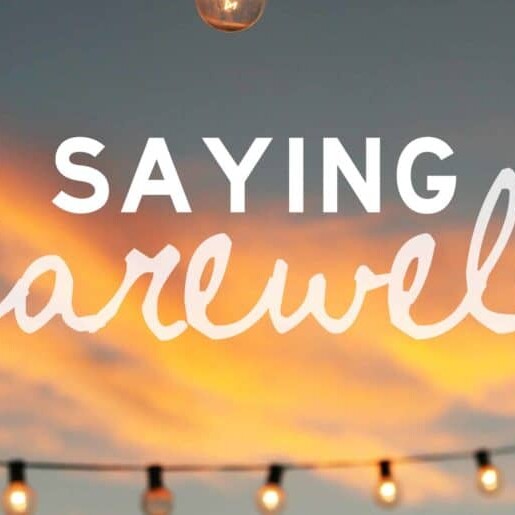“An effective facilitator is often what makes the difference between success and failure,” write Paul W. Mattessich and Kirsten M. Johnson, authors of Collaboration: What Makes It Work. “Facilitation isn’t magic, but it is multifaceted, challenging, and essential.”
If design is the framework or skeleton of a meeting, facilitation is what brings it to life. The work of a facilitator is to sense and respond to the needs of the group, while simultaneously guiding the network toward meaningful shared outcomes.
The crux of good facilitation, according to Adam Kahane, author of Facilitating Breakthrough, is not to get people to work together, but to remove the obstacles to connection and collaboration—obstacles like disconnection, debilitating conflict, and other forms of “stuckness.”13 After all, the Latin translation of the word facilitate is “to make easier.”

Picture a river: while you can’t push a river to move in a certain direction, you can remove rocks and logs impeding its path to allow the water to flow by itself. Good facilitators do not force things forward; they hold space for all points of view to be acknowledged while helping the conversation to flow.
Facilitating in collaborative contexts has a lot in common with good facilitation in any setting. As with any facilitation, it’s important to set the context for the gathering, ask good questions, and invite divergent perspectives. Facilitators also need to be able to acknowledge and disrupt harmful power dynamics to ensure that people have maximum agency to contribute.
In addition to these fundamentals, facilitating in a collaborative environment calls for operating with a network mindset. This means trusting the group rather than trying to control it, embracing emergence, inspiring self-organization, and naming dynamic tensions as they arise. It means embodying the norms they wish to see in the group. In many ways, the group will mirror the energy of the facilitator.
Facilitators are also tasked with demonstrating a comfort with ambiguity, with not knowing. The job of a facilitator is not to have all the answers. Instead, it is to ask good questions and help participants navigate the inherent complexities of life.
Drawing from experiences facilitating countless meetings with colleagues over the past ten years, we see the following as fundamental practices of good facilitation:
-
- -Show up with your whole self
- -Frame the context
- -Hold space
- -Invite divergence
- -Stay emergent with intention
- -Lead with humility
Show Up with Your Whole Self
As a facilitator, you have a specific job to do. But you’re also a complex, multifaceted human being. Bring the many sides of yourself to each convening as a way to model wholeness for the group. You do not need to be perfect. You will make mistakes, just like everyone else. Use humor and laughter to break moments of ten- sion and acknowledge shared imperfections and humanity.
Reveal emotion. Be open. Show the soul behind the role. It can make all the difference in the world. As you invite people to share why they have decided to participate, don’t be afraid to reveal why the work matters to you, as well.
Frame the Context
Imagine the very beginning of a convening. Everyone is gathered together, some for the first time. There you stand, ready to begin the session. What are the first words you will say? Think carefully, as they are vitally important. While it may be tempting to jump into the work of the day and blow by the opening, don’t miss this powerful moment. The opening to a convening is not a mere formality. “When we optimally prepare people for the form, function, and purpose of our gathering, they will be present in a way that greatly improves the chances of our purpose being actualized,” write Craig Neal and Patricia Neal in The Art of Convening.
Though the opening is a particularly significant moment, it’s also necessary to frame the context throughout the convening, including whenever you launch groups into a new activity or dis- cussion, as well as at the end of each day. Think of framing as the essential practice of clarifying the state of the moment and preparing the group for the work ahead. The best frames integrate what you heard from participants and contextualize the purpose of the convening or a particular session in a way that will increase engagement in the activities that follow.

Hold Space
There will inevitably be moments in convenings when the temperature in the room starts to rise. These are times when the conversation gets tense, people feel on edge, and nobody wants to openly acknowledge it. At this moment, many people will be tempted to retreat into what Robert Solomon and Fernando Flores call “cordial hypocrisy”—nice, polite conversations where real issues are swept under the rug.
The facilitator’s role here is to acknowledge what’s happening, invite people to take a breath, and then hold space so that the real issues can be worked through. Acknowledging what is happening can take the sting out of it, reducing the anxiety that the discomfort brings. Reminding people to stay present in the conversation may help them avoid falling into a stress response of “fight, flight, or freeze.” These are the moments of truth, the times when groups can either fall back into what’s comfortable or sit in the tension long enough to acknowledge unspoken realities and address critical issues.
Invite Divergence
Collaborative facilitators invite divergent perspectives, rather than avoid them. This is what enables participants to think creatively together, even when they disagree. When addressing an important issue, people may make statements so emotionally charged that they risk being isolated or labeled by others. At that moment, facilitators may feel the urge to move past the dissenting input and get back to the task at hand. What happens next can change the course of the group’s collective culture.
As a facilitator, instead of avoiding the disruption, turn to that person with your full attention and ask them to elaborate. Then, check to see if others feel similarly. If nobody does, you still need to validate that person’s perspective. It doesn’t matter if you agree or disagree with their opinion; what matters is making the room a safe place for different perspectives to be shared and honored. I learned this practice from Marvin Weisbord and Sandra Janoff, creators of the Future Search process, and it’s served us more than a few times. By validating that person’s perspective, you make them feel heard, which allows the person to relax and rejoin the flow of the conversation.
Then, consider inviting people to share their own perspectives. This opens the space for people to offer contrasting opinions in a way that is respectful. These moments can dramatically shift the way in which participants interact with one another by creating a sense of psychological safety and appreciation for diverse points of view.
If you become stuck when something is going on in the room and you’re not sure what to do, put your faith in small groups or pairs. Quickly break the participants into groups of two to four, and ask them to discuss what’s happening in the room and what they think needs to happen next. Reflections can then be shared in the full group, which may give you a clue as to how to proceed (this might be a great time for a break as you quickly redesign the agenda!). This is one of Peter Block’s favorite tactics. “In doing this,” he writes, “we ask the community to take responsibility for the success of this gathering and express faith in their goodwill, even if they are frustrated with what is happening. . . . Doing this is an acknowledgment that critical wisdom resides in the community.”
Stay Emergent with Intention
No agenda is likely to survive contact with reality. As a facilitator, you have to be ready to adapt on your feet, sensing into where the energy is and what needs to happen next. At the same time, your facilitation shouldn’t be so loose that conversations are scattered. It’s a delicate balance of being open to emergence while being deliberate about closing conversations to move things forward.
In Facilitator’s Guide to Participatory Decision-Making, Sam Kaner points out that groups in conversation typically need to move through a process of generating divergent and creative ideas before converging and arriving at a decision point. As facilitators, we give groups the space to sense their way through these conversations and the autonomy to shift from one conversation to the next. But before moving on to a new topic, we check to see if the first conversation can be closed with clarity—which may simply be a next step. If a conversation cannot be closed, we have the group acknowledge that they are purposefully shifting the focus of the discussion.
Lead with Humility
The role of the facilitator has inherent power. Facilitators usually have the final say over the agenda, they orchestrate the flow of the conversation, and they can influence who speaks and when. The act of facilitating is an act of exercising power. Facilitators use that power thoughtfully to make the gathering as welcoming, equitable, and open to shared leadership as possible.
As a facilitator, first examine your own privilege and implicit biases and acknowledge the power that comes with the role. Then, invite participants to provide candid feedback if they recognize opportunities to make the space more inclusive. If you come from a dominant cultural group, it is especially important to consider other cultural frames in the meeting design phase as well as in real time during a convening. Otherwise, you run the risk of unconsciously reinforcing dominant group norms that can alienate or even cause harm to some members of the group. When facilitators are too passive, they fail to fulfill some of the critical responsibilities of the role. “Far from purging a gathering of power,” passivity creates a power vacuum that others can fill “in a manner inconsistent with your gathering’s purpose,” writes Priya Parker.
Instead, I recommend practicing what Parker calls “generous authority”: lead the meeting confidently but also with humility, owning the power you’ve been entrusted with while using that power in service to others and to the group as a whole. Rather than using power over others to shut people down or control the conversation, emphasize power with, among, and within, to increase shared leadership across the group and guide the meeting toward life-affirming outcomes.
This piece is dedicated to David Sawyer, one of the best facilitators I’ve ever known.

David Ehrlichman is author of Impact Networks: Create Connection, Spark Collaboration, and Catalyze Systemic Change (impactnetworks.xyz). He is currently working as cofounder and ecosystem lead of Hats Protocol (bit.ly/structurewithoutcapture), working to unlock a new paradigm of human coordination. From 2013-2023 David was cofounder and coordinator of Converge (converge.net), a network of practitioners who build and support impact networks.
David has helped form dozens of impact networks in a variety of fields, and was a founding coordinator for networks in the fields of environmental stewardship, economic mobility, access to science, civic revitalization, and web3. He speaks and writes frequently on networks and the future of coordination, finds serenity in music, and is completely mesmerized by his 1.5-year old daughter. Find his podcasts, writings, and other projects at davidehrlichman.com.
featured photo by kazuend on Unsplash

Network Weaver is dedicated to offering free content to all – in support of equity, justice and transformation for all.
We appreciate your support!
Related Posts
September 24, 2025
Thank you & Farewell
November 4, 2024



